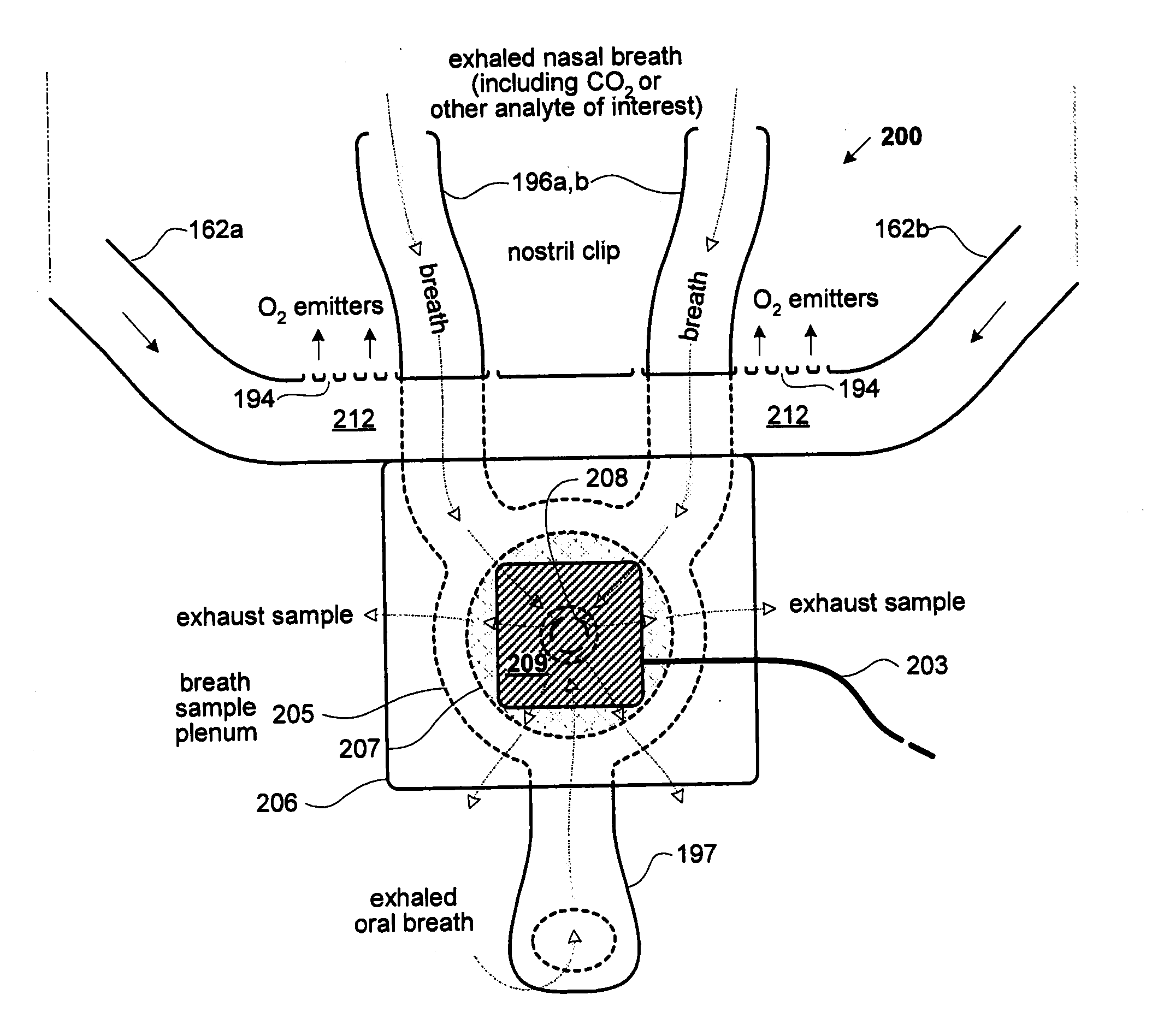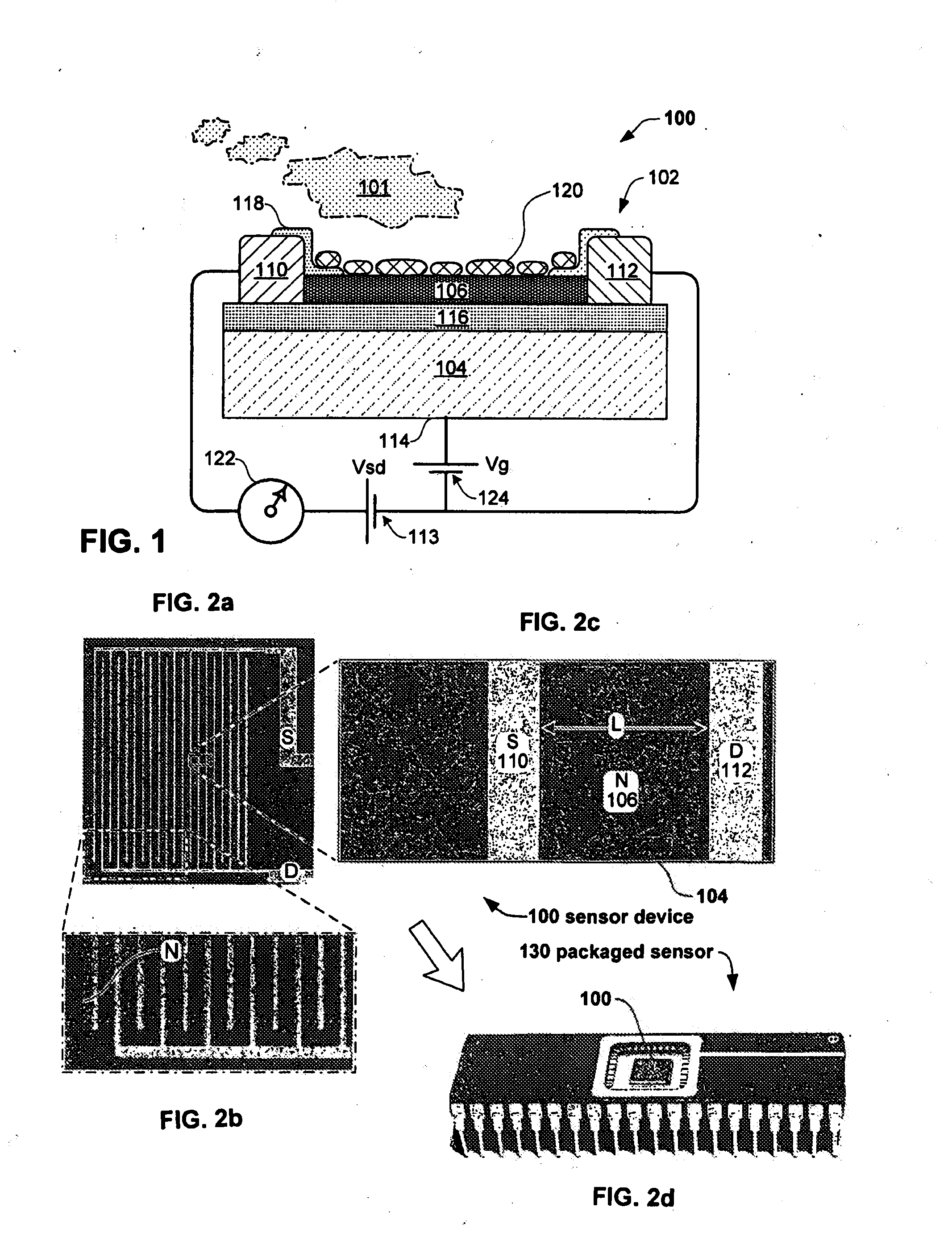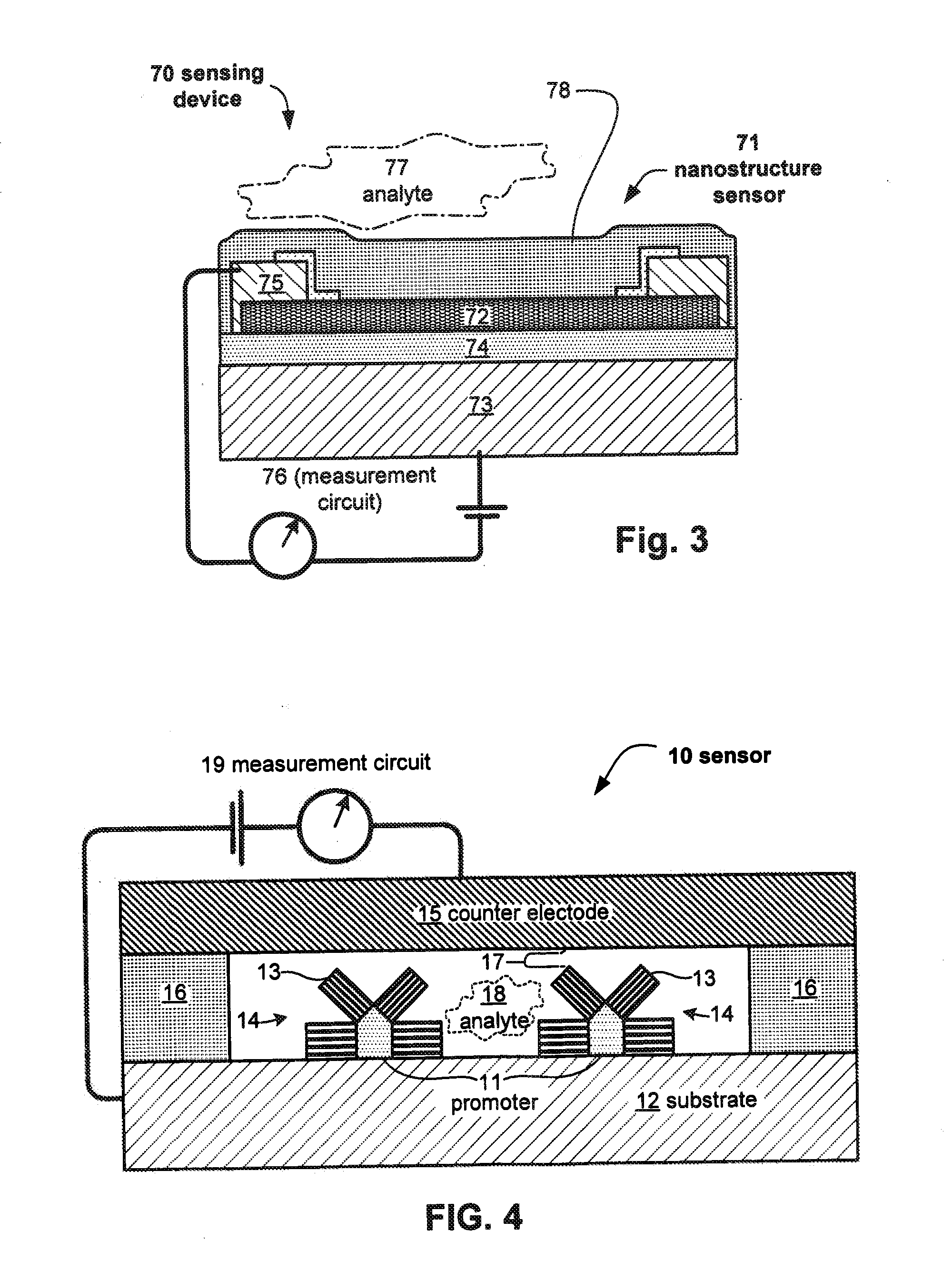Anesthesia monitor, capacitance nanosensors and dynamic sensor sampling method
a nanosensor and sensor technology, applied in the field of nanostructured sensor systems, can solve the problems of high cost of apparatus, high cost of calibration, time and calibration gases, etc., and achieve the effects of saving setup time, avoiding over-cash, and being cost-effectiv
- Summary
- Abstract
- Description
- Claims
- Application Information
AI Technical Summary
Benefits of technology
Problems solved by technology
Method used
Image
Examples
embodiment 50
[0127]FIG. 5 shows schematic architecture of a sensor device embodiment 50 having aspects of the invention for detection and measurement of analyte species, for example, by detection of electrochemical energy associated with the presence of an analyte. The device 50 comprises a sensor substrate 52 (e.g., comprising PET, polycarbonate, flexible polymers, or the like) having a reaction or sensor tip portion of its surface 60 on which an interconnecting carbon nanotube (CNT) network 54 is disposed. In the example of FIG. 5, a conductive trace or drain 55 electrically communicates with the network 54 (e.g., silver ink may be deposited on the substrate 12 so as to contact a portion of the network 54). Device 50 includes a well or container 57 holding buffer or fluid media 59 in which both sensor tip 60 and a gate electrode 58 are immersed. In certain embodiments, gate electrode 58 may include a reference electrode, such as a Ag / AgCl reference electrode, saturated calomel electrode, or th...
embodiment 10
[0200]FIG. 16 is a plan view, cross-sectional view, and equivalent circuit diagram of an exemplary capacitive nanosensor embodiment 10 having aspects of the invention, comprising a bi-layer architecture including a substrate 11 (e.g., PET) and a conductive base or plate 12 (e.g., metal such as Au, graphite, and the like). A dielectric layer 13 (e.g., a polymer, SiO2, and the like, or combinations thereof) is interposed between base plate 12 and a nanostructured element 14 (such as one or more CNT or a CNT network). Nanostructured element 14 is capacitively coupled to conductive base 12 in that base 12 is space apart from element 14 to form a pair of capacitive plates. Digitated top lead 15 is shown contacting CNT element 14 to permit electrical communication with measurement circuitry (not shown). Preferably, top leads 15 are applied in such a manner as to prevent contact with base plate 12, so as to avoid a current path between a capacitive plate pair 12, 14, as shown in equivalent...
embodiment 20
[0201]FIG. 17 is a plan view, cross-sectional view, and equivalent circuit diagram of an alternative exemplary capacitive nanosensor embodiment 20 having aspects of the invention, comprising off-set capacitor elements in series, including a substrate 21 (e.g., PET) and an offset pair of conductive leads 22, 23 (e.g., metal such as Au, graphite, and the like), preferably disposed side-by-side adjacent substrate 21, separated by a selected gap. Dielectric layer 24 (e.g., a polymer, SiO2, and the like, or combinations thereof) covers active regions of leads 22, 23 and in turn supports CNT element 25, such as a carbon nanotube network. Advantageously, CNT element 25 forms a common capacitive plate electrode opposing both leads 22 and 23 (capacitively coupled), as shown in equivalent circuit 26.
PUM
| Property | Measurement | Unit |
|---|---|---|
| electrical property | aaaaa | aaaaa |
| chemical | aaaaa | aaaaa |
| composition | aaaaa | aaaaa |
Abstract
Description
Claims
Application Information
 Login to View More
Login to View More - R&D
- Intellectual Property
- Life Sciences
- Materials
- Tech Scout
- Unparalleled Data Quality
- Higher Quality Content
- 60% Fewer Hallucinations
Browse by: Latest US Patents, China's latest patents, Technical Efficacy Thesaurus, Application Domain, Technology Topic, Popular Technical Reports.
© 2025 PatSnap. All rights reserved.Legal|Privacy policy|Modern Slavery Act Transparency Statement|Sitemap|About US| Contact US: help@patsnap.com



